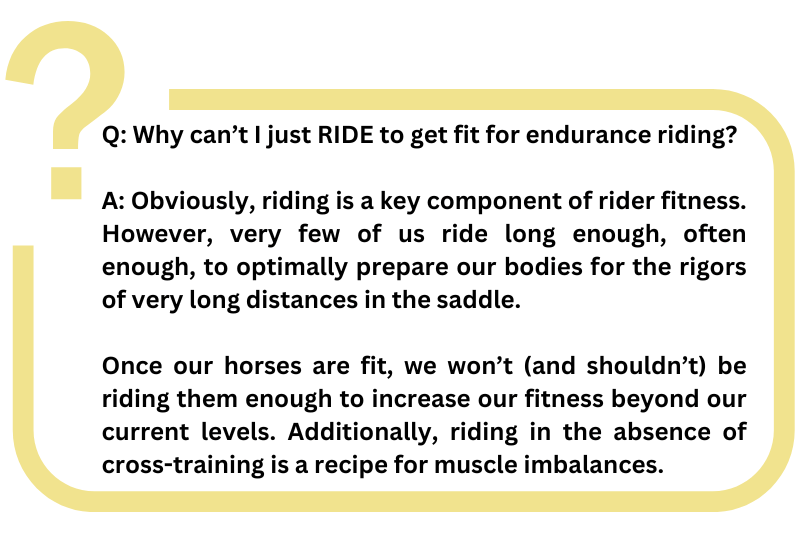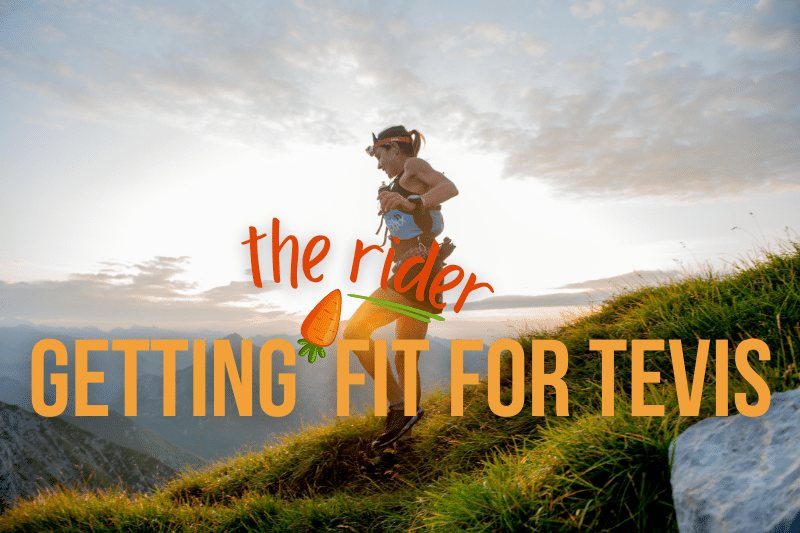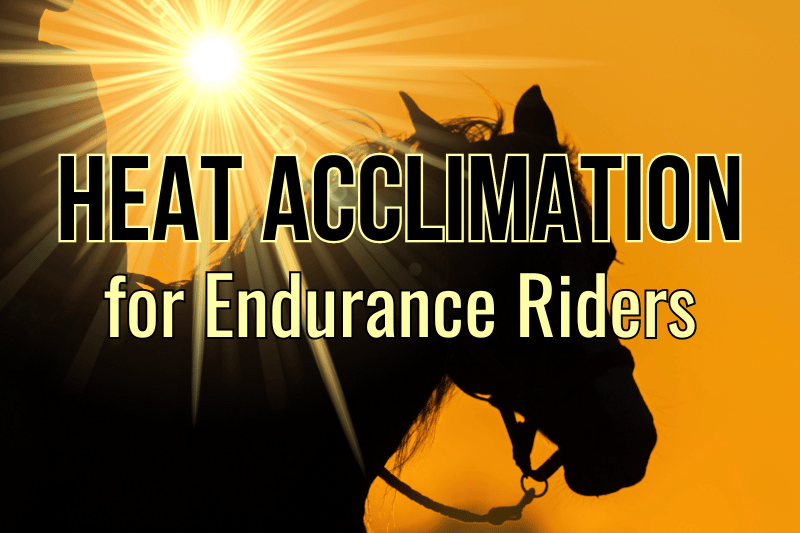Have you ever registered for Tevis?
If so, you probably remember signing the release. It contains these choice phrases:
I am aware that the Western States 100 Mile Trail Ride is considered by many to be the most difficult and demanding endurance ride in the world… The ride is difficult and hazardous for even experienced and well-conditioned horses and experienced healthy riders under the most favorable of conditions… I accept responsibility for all the risks and dangers inherent in this activity: Including but not limited to…risks from natural conditions, including wildlife…narrow precipitous trails in remote wilderness areas, risks of injury from falling, altitude sickness, overuse, fatigue, dehydration, getting lost, exposure to elements and falling rocks and trees. These are only some of the risks.
I was planning to crew at Tevis this year. Riding entered the picture quite abruptly, exactly 12 weeks in advance of race day. (Here’s how that went down.)
There isn’t a world in which this ride will be easy. However, there absolutely are ways I can prepare my body and mind for the challenge. In this post, I’ll paint the broad strokes of my personal training plan for Tevis 2024. Future posts will elaborate on the key elements.
I hope that, in following along, you’ll pick up some strategies you can apply to your own endurance riding readiness. Even if you’re starting at a different level or shooting for a different endurance riding goal, the concepts still apply.
Is Endurance Rider Fitness Really Necessary?
I’m well aware that many riders don’t specifically focus on their own fitness in preparation for endurance riding. There’s no doubt that people finish rides all the time time – even 100’s, including Tevis – without doing so. It can be done. However, it is my opinion that they’re leaving performance on the table (at best) or (much worse) interfering with their horses’ comfort and longevity in the sport.
Years ago, I wrote in The Athletic Rider:
Being an athletic rider means that I eat well, I sleep lots, and I cross-train hard. Hard enough to build my body, my character, my feel. Hard enough to honor the effort with which my horse honors me.
I run for my horse. I lift for my horse. I stretch and fuel and recover so that I can be there for him ~ really be there ~ in the dark hour on the mountain when it’s just the two of us surging over unseen trail, my hands in his mane and his body in my mind, melting together into a single, sweat-soaked creature that is worthy of being called Us.
So, let’s get into it.
My TEVIS PREP Fitness Plan
The Goal
I started developing my training plan with a question: What do I need to be able to do?
Here’s my answer: I need to be able to guide and support my horse for up to 24 hours over 100 miles of challenging terrain despite hot temperatures, high altitude, inadequate sleep, and emotional stressors impacting both my mount and myself.
The Starting Point
I’m fortunate to be launching into this 12-week training cycle (which, incidentally, is a pretty standard ramp-up period for athletes attempting an endurance event like a marathon, century bike race, or half-Ironman) with a solid fitness base.
I’m a 46-year-old female with a long history of what you might call ambitious recreational fitness. I’ve strength trained since my mid-twenties, taken up half-marathoning within the past three years, and generally taken solid care of my nutrition and mobility for the majority of my adult life.
I contend with some chronic issues (severe bunions, piriformis pain, grouchy rhomboid) but am mostly unbothered by old riding injuries (cracked lumbar vertebrae, torn hamstring).
I’ve ridden 100s before, but not for almost a decade.

In order to be as ready as possible for the 2024 Western States Ride, I’m planning to:
1. Build Cardiovascular Endurance for Efficient Energy Production Over an Extended Period
Why It Matters: Our bodies have multiple systems for creating energy within our cells. The fitter we are, the better we’re able to use the most efficient of these systems to work harder and longer.
I know from monitoring my own heart rate during conditioning rides that I stay well within this maximal-efficiency range, even when negotiating hills or singletrack at a fast pace.
However, I also know from distance running that the longer I maintain a moderate effort, the higher my heart rate creeps, indicating that I am inching toward the threshold that will eventually push me into less efficient energy metabolism.
Although riding presents significantly less cardiovascular demand than running, I’m going to be doing it much longer. It behooves me, therefore, to maximize my ability to produce energy efficiently for many hours of light-to-moderate effort.
Current Status: Last month, I ran the Race to Robie Creek, which has the reputation of being the “toughest half-marathon in the northwest.” The upshot of this is that I can run in Zone 2 (at or below 75% of max heart rate) for several hours. I can run at threshold pace (around 85% of max heart rate) for at least two hours. I’ve done a lot of hill training, with a particular focus on climbing.
Tevis Prep Plan: Over the next few months, I want to continue to improve my cardiovascular endurance, but spend less time doing it. I’ll do this by cutting out my longest runs and incorporating more high intensity intervals into my 3 to 7 mile runs. If this gets too hard on my poorly-conformed feet, I’ll switch to intervals on the bike.
High intensity interval training does a long of good things, but the ones that matter most for Tevis include: improved utilization of fat for energy, increased stroke volume of the heart, and better clearance of lactate from working muscles.
I’ll also shift from an uphill-running focus to a downhill-running focus. Most of my running at Tevis will be descending into the canyons. Running downhill can be very hard on the quadriceps and knees if you haven’t trained for it, so train for it I will.
2. Strength Train to Support Downhill Running and Maintaining Good Posture in the Saddle
Why It Matters: Anyone who has ridden 100s (or even 50s) knows that muscular fatigue accumulates over hours in the saddle. Unfortunately, tired riders tend to fall back on muscle recruitment patterns that are detrimental to their horses. Some of us tend to arch our backs, while others slouch. Both deviations interfere with the horse’s ability to lift his back and engage his hindquarters.
Current Status: I’ve strength trained pretty consistently since my mid-twenties, usually centered on heavy compound lifts. During my recent half-marathon training cycle, I focused mostly on bodyweight work to support and balance my running.
Tevis Prep Plan: I’m shifting back into a heavy lifting cycle using a program called MAPS Anabolic. This involves two, full-body heavy lifting days per week plus 4 – 5 days of trigger sessions. Trigger sessions are shorter, less intense strength workouts that can be tailored to focus on specific goals.
My trigger sessions will include eccentric quadricep work (for downhill running and riding in two-point), as well as core and upper back strength to help me maintain good riding posture all day and into the night.
Shopping for your horse? Using my link to visit SmarkPak is an easy way to support the blog at no extra cost to you. I appreciate it so much!
3. Implement Heat and Altitude Adaptation Strategies
Why It Matters: One of the greatest hurdles that both equine and human athletes encounter on the Western States trail is extreme heat. With climbs reaching above 11,000 feet, altitude also presents a significant physical challenge.
Fortunately, our bodies are capable of adapting to both heat and altitude, and there are safe (if not entirely pleasant) strategies for facilitating these adaptations.
Current Status: In my thirties, I handled heat really well. However, I’ve noticed that it hits me harder these days. Summer afternoons here in the high desert can really leave me feeling wrung out.
I live at about 2,500 feet. Past experience on backpacking trips has suggested that working at altitude is not my strong suit. On the other hand, I’ve done fine with less aerobically challenging activities (like skiing and endurance riding) up to 9,000 feet of elevation.
Tevis Prep Plan: I’m pretty keen on doing whatever I can to minimize the negative impact of the high and hot points on the Tevis trail. However, I’m still researching exactly what that looks like. Be sure you’re subscribed to my newsletter so you don’t miss upcoming posts covering heat training and altitude adaptation for endurance riders.
4. Engage in Recovery, Mobility, and Injury Prevention Activities
Why It Matters: All the fitness in the world isn’t enough to support our horses if we are dc crippled by pain. Releasing tight fascia, stretching chronically over-shortened active muscles, and enlisting professional help to resolve minor injuries before they become major ones is part of being an athlete.
To be fair to our horses, we must put the time and money necessary into taking care of ourselves.
Current Status: For years, I’ve been proactive about seeking solutions to chronic physical pain. My feet are kept (mostly) happy with custom orthotics. I have a standing monthly date with my chiropractor and soft tissue guy, who has kept me pasted together through many wrecks of varied severity. I’ve recently built a habit of foam rolling before every run, which amounts to almost daily. I eat a mostly anti-inflammatory diet and usually sleep at 8 hours per night.
Tevis Prep Plan: I’ve added additional self-myofascial release around my knees to keep them from getting grouchy as I do harder conditioning rides and more downhill running. I’ve also tightened up my diet to increase protein intake and make even fewer exceptions for foods (like sugar and processed junk) that don’t contribute to cellular repair.
And That's Not All...
Rider preparation for a race like Western States encompasses more than just fitness, per say. Stay tuned for upcoming explorations of fueling and hydration strategies, getting comfortable with being uncomfortable, and the best Tevis prep resources I can find on the world wide web.
You Might Also Like
This post includes affiliate links, and I may earn a small commission (at no extra cost to you) when you purchase through these links. I only recommend products and services I think are helpful and useful. Thanks for helping me offset the cost of maintaining this blog as a free resource!



